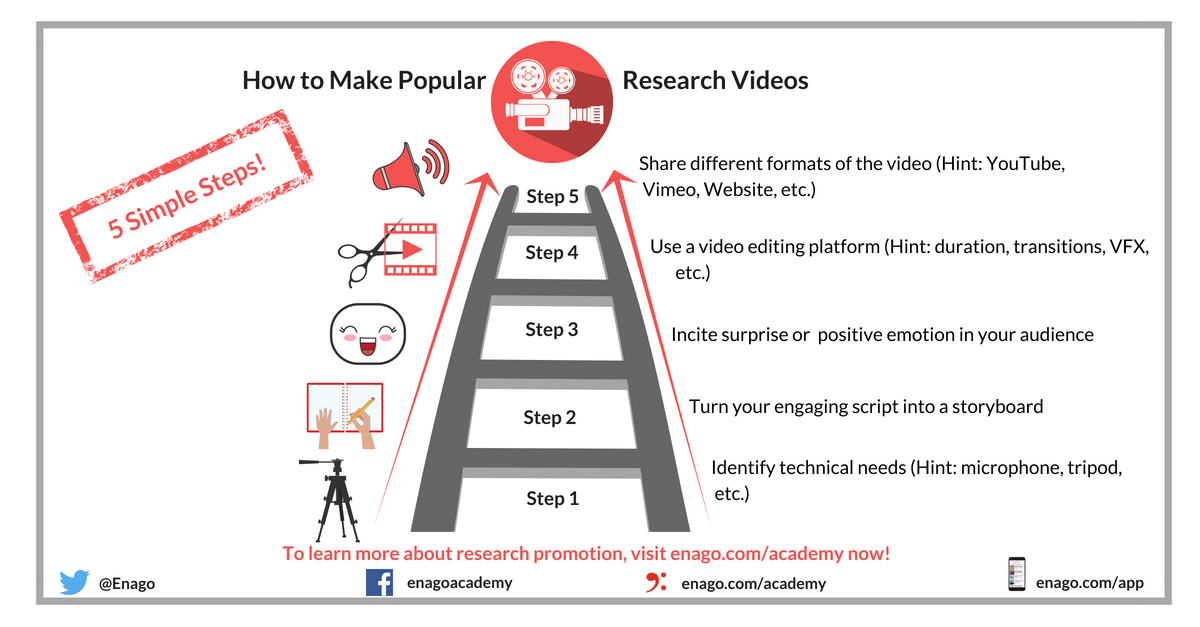Video Research: Open Access Academic Video Journals

Open access publication has already altered the academic landscape vis a vis the final stage of research: publication. One such change stands as yet another means of communicating research results: open access video journals. The beginning of scientific and academic video (or visual) journals, means that researchers have more outlets to share their work. Though different from traditional text articles, open access video journals provide an interactive way to communicate Science. For instance, the video journal JoVE hopes to solve a significant problem in science: irreproducibility of experimental results. With detailed videos accompanying submitted standard manuscripts, researchers can simply follow along with the video to reproduce important experiments; this may prove to be one of the most important changes in reporting scientific protocol since the advent of science as a critical field.
Advantages and Disadvantages of Video Journals
The advantages of online video journals include (some are self-evident, others unique):
- Immediate access to information and reader control. For instance, in the journal Latest Thinking, a reader can click on the introduction, methods, results, “relevance”, and “outlook”, whenever they like.
- Traditional “figures” and illustrations are presented in the video as the author speaks (particularly beneficial for medical video journals, as well for the humanities, and social sciences).
- Combination of video and text enhances dissemination of new research findings.
- Easy to create (e.g. JoVE films directly in author’s laboratories).
- Clear, visual discussions, and detailed filming of laboratory experiments, and new laboratory techniques
- Boosting outreach to researchers, government, and communities, with instant feedback;
- Protection of intellectual property through Creative Commons licensing applies here too
- Accessibility and input from the academic community regarding cutting edge research.
- Real-time online discussions.
Disadvantages of online video journals include the following points:
- Not all details found in traditional journals are explicitly placed in a text-based article.
- Potential for information overload (visual [film], audio, and textual information can lead to possible confusion and too much searchable information).
- No hard copies of the article. Print/hard copies are still important to researchers, depending on how they work.
- Require an internet connection (unless you download the video article).
- Hard (raw) data are not easily viewed, and not presented (i.e., tables and all graphs)
- A cost is involved (just as with other open access print journals).
At the Vanguard: A New Body of Academic Periodicals
Other examples of video journals include Edorium that specializes in medical research, specifically surgery, however, they also break down other video articles in another format called “scientific video journals”, which is a catchall for all other fields (including social sciences and humanities). Researchers demonstrate their videos in a live forum. This type of online journal has the benefit of strengthening any print supplement to the video work.
JoVE (Journal of Visual Experiments) has a rigorous peer-review process, but, predictably, it is time-consuming; a screenplay needs to be created, with all “actors” consulted subsequent to submission. Just as with other video journals, the cost involved is a drawback (standard access: 2400 USD; open access: 4200 USD). JoVE uses the delayed open access model (videos are re-published to the US government in PubMed Central after two years). They also have a hybrid format, where authors can switch to open access once their paper has been accepted. The cost of making the videos is high, at approximately 10,000 USD (£6,300).
Change Hurts; Innovation Improves
Online academic and scientific journal publication will transform the way publication is conducted, however, in order for it to be beneficial—it will require a significant shift in
1) perspective: researchers must begin to think of themselves as amateur video bloggers, rather than simply opening a new Word/LaTeX file
2) the learning curve, from typing to making videos is extremely steep
3) coordination with the journal must be extremely simple, very quick, and responsive.










